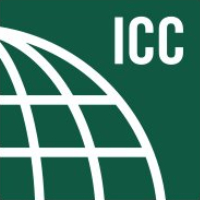
Four Steps to Using Building Codes to Mitigate the Impact of Disasters
Building codes and standards are designed to help ensure the public health, safety and welfare of people who live in, work in and visit communities around the world.
Disasters are increasing in severity and frequency due to an escalation of hazardous weather conditions and a changing climate. These disasters often have devasting impacts on buildings and communities around the world and, in recent years, we have witnessed some of the most severe disasters in history – with many communities still struggling to cope with the aftermath.
According to the NOAA National Centers for Environmental Information, in 2023 the United States experienced a total of 28 billion-dollar disasters totaling $93.7 billion in economic losses and claiming 492 lives.
Hazard mitigation is a defensive approach that reduces long-term risk to people and property from future disasters. Managing and mitigating the property and life safety risks associated with disasters can be challenging if you don’t know where to start.
Week 2 of the International Code Council’s Building Safety Month campaign aims to provide you with the resources and knowledge you need to protect your homes and communities from disaster.
The Vital Role of Building Codes in Disaster Mitigation
There is growing recognition of the importance of adopting and implementing up-to-date, modern building codes to help mitigate the impacts of disasters and ensure the safety, sustainability and resiliency of buildings.
The National Institute of Building Science (NIBS) conducted a report, Natural Hazard Mitigation Saves, that studied the benefit-cost analysis of natural hazard mitigation. Their report found that up-to-date building codes can save $11 for every $1 invested. Equivalently, the Federal Emergency Management Agency (FEMA) further validates that building codes are the best way to mitigate damage from all hazards.
FEMA’s studies have found that if all future construction were built to the latest edition of the International Codes® (I-Codes), communities could avoid more than $600 billion in cumulative losses from disasters by 2060.
Whether it is a new or existing building, there are steps that can be taken to ensure that building codes are used appropriately to help mitigate the impact of disasters.
1. Become Familiar with Applicable Building Safety Codes and Standards
Gaining an understanding of current building codes and standards is crucial for anyone involved in the construction or upkeep of a building, especially homeowners and property managers. It is important to research and become familiar with the codes and standards that apply to your home or buildings by consulting local building authorities, code books and industry organizations.
There are educational opportunities available to professionals who are looking to expand their knowledge. The Code Council offers a robust library of online courses and resource materials pertaining to the I-Codes; including topics specific to building safety, fire, design and construction, safety, plumbing, mechanical, fuel gas and more. A local building department can also be a valuable resource for information on l codes and standards.
2. Check for Available Federal Funding Opportunities
When communities adopt and implement up-to-date codes and standards, they are more likely to qualify for federal emergency management funding that can be used to improve building safety, resilience and sustainability.
Newly-expanded FEMA grants are available to fund code adoption, implementation and enforcement – providing new resources for communities to update or build out code adoption efforts. The Code Council is available to assist with applying for federal funding for building safety, you can learn more and get assistance here.
3. Make Necessary Updates Based on the Latest Codes
It is important that your home or business is compliant with the most recently adopted building codes in your location. Adherence to updated codes can help protect people from many types of harm, including hazardous events.
Some homes and businesses, for example, now feature a safe room. A safe room is a potentially life-saving investment that can be retrofitted into existing buildings or incorporated into new construction projects. Safe rooms, as defined by the ICC 500 standard and FEMA P-320, are hardened structures specifically designed to meet specific wind loading criteria and provide near-absolute protection in extreme weather events, including tornadoes and hurricanes.
Similarly, the SSTD 10-99 Hurricane Resistant Construction Standard provides guidelines on how to improve the structural performance of a building in the event of high-wind conditions. These updates can be done by strengthening three important areas: roof and wall construction coverings, openings such as windows and doors and load path connections.
4. Stay Up-to-Date as Codes Change & Get Involved in Code Development
It is important to always stay up to date with local, regional, state or provincial standards when planning any future building upgrades or remodels. Adhering to these updates can ensure that buildings continue to stay compliant to help minimize property damage and save lives.
This can be accomplished through ongoing education and training, scheduling regular building inspections and staying informed about any upcoming code changes. The increased frequency of hazardous weather conditions requires codes, standards and recommendations to be reviewed and updated to ensure buildings remain resilient and can withstand potential hazards. Through the Code Council’s code development process, the I-Codes are routinely reviewed and developed through a governmental consensus process to ensure safe, affordable and sustainable communities and buildings worldwide.
For industry and professionals who want to get involved in the code development process, visit here.
Help Prepare Your Home and Community for Disaster
Building professionals and property owners play a crucial role in ensuring the safety and resiliency of our built environment in the face of a disaster. While we cannot always predict what the damage will be, steps can be taken before a disaster strikes to help minimize the devastation.
Building codes and standards are designed to help ensure the public health, safety and welfare of people who live in, work in and visit communities around the world.
Learn more about how to protect your home and community here.







